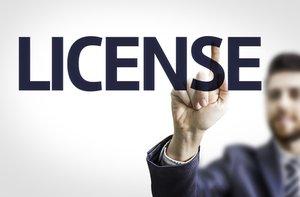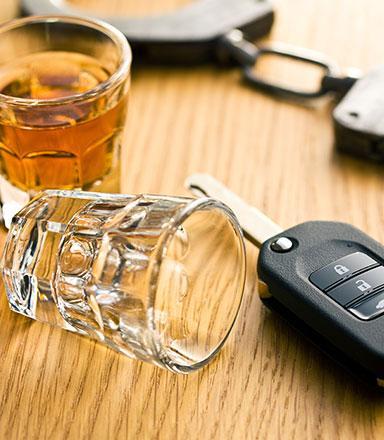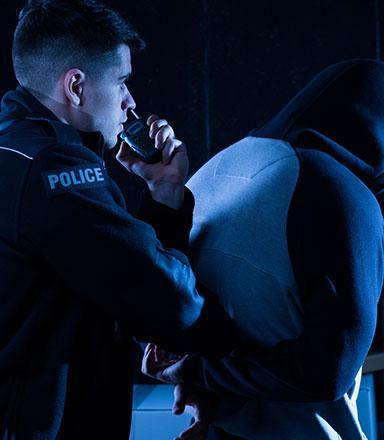Recent Blog Posts
Connecticut is a Juvenile Justice Trendsetter
 According to a national report, Connecticut is among several states that are trendsetters in matters pertaining to juvenile justice. The report is based on changes to state law that have been enacted during the last decade. This is good news for juvenile offenders who face many risks entering the Connecticut juvenile justice system.
According to a national report, Connecticut is among several states that are trendsetters in matters pertaining to juvenile justice. The report is based on changes to state law that have been enacted during the last decade. This is good news for juvenile offenders who face many risks entering the Connecticut juvenile justice system.
Connecticut, along with Illinois and Mississippi, have increased the age of jurisdiction of juvenile courts to treat older youths as juveniles rather than as adults for purposes of criminal prosecution. As of 2011, 17-year-olds are considered to be juveniles for purposes of criminal law. Before the change, 16- and 17-year-olds were considered to be adults.
Connecticut is also one of ten states that have amended their laws to make it more difficult to transfer juveniles from juvenile court to adult court. The other states are Arizona, Colorado, Delaware, Illinois, Indiana, Nevada, Utah, Virginia, and Washington. Transferring youths to the adult court system is a way for states to treat young offenders as adults for purposes of criminal law.
Fatal Car Crashes Involving Marijuana Have Tripled In the Last Decade
 The decriminalization of marijuana is a growing trend nationwide. In Washington and Colorado, marijuana has been legalized, while in almost half the states—including Connecticut—it may be used legally only for medical purposes. However, there may be a darker side to these trends: a recent study shows that the number of marijuana-related automobile fatalities has risen sharply in the last decade. The data suggest that drugged driving may be an increasingly common cause of car accidents.
The decriminalization of marijuana is a growing trend nationwide. In Washington and Colorado, marijuana has been legalized, while in almost half the states—including Connecticut—it may be used legally only for medical purposes. However, there may be a darker side to these trends: a recent study shows that the number of marijuana-related automobile fatalities has risen sharply in the last decade. The data suggest that drugged driving may be an increasingly common cause of car accidents.
According to a report by the Columbia University Mailman School of Public Health, the presence of non-alcohol drugs in the systems of drivers involved in fatal car crashes has been on the rise and has tripled in the last decade. Using data from the states that routinely test the blood of drivers involved in fatal car accidents, the study reported that in 1999, 4.2 percent of drivers who were killed in automobile crashes tested positive for marijuana; in 2010, that number increased to 12.2 percent. The major increase was shown across all ages and in both genders.
Conviction Reversed on Technicality
 In a 2-1 vote, the Third District Court of Appeals recently overturned a guilty verdict in a sexual assault trial, because the judge gave the jury a definition of “reasonable doubt” during deliberations. In response to a question, the judge told the Tazewell County jury that the meaning of “reasonable doubt” was “for you to determine.” The appeals court ruled that this statement constituted a definition, which is prohibited under state law.
In a 2-1 vote, the Third District Court of Appeals recently overturned a guilty verdict in a sexual assault trial, because the judge gave the jury a definition of “reasonable doubt” during deliberations. In response to a question, the judge told the Tazewell County jury that the meaning of “reasonable doubt” was “for you to determine.” The appeals court ruled that this statement constituted a definition, which is prohibited under state law.
In his dissent, Justice Daniel Schmidt argued that the trial judge correctly applied the law, because the definition of “reasonable doubt” is indeed up to the jury’s discretion in a criminal law case.
The Eraser: How to Expunge a Criminal Record in Connecticut
A criminal record can make it difficult to get a job or find a place to live. Not only that, a criminal record can make it almost impossible to become a lawyer, doctor, police officer, Sheriff's deputy, or any other position that requires a clean background. An experienced criminal defense attorney can show you how to expunge your criminal past. In many circumstances, the process is largely mechanical.
criminal record can make it difficult to get a job or find a place to live. Not only that, a criminal record can make it almost impossible to become a lawyer, doctor, police officer, Sheriff's deputy, or any other position that requires a clean background. An experienced criminal defense attorney can show you how to expunge your criminal past. In many circumstances, the process is largely mechanical.
How Do I Get My Record Expunged?
Connecticut has some very generous erasure laws, as opposed to some other states. In New York, for example, a criminal record can be erased only in very limited circumstances, such as the discovery of exonerating DNA evidence. According to the statute in Connecticut, a person’s felony or misdemeanor record “shall be erased” in the following situations:
- Final Verdict: If a fact-finder determines the defendant not guilty, or the conviction is overturned on appeal and the deadline to file a writ of error passes, all police and court records are erased.
Driving with a Suspended License Can Result in Criminal Charges
 In Connecticut, the Department of Motor Vehicles can suspend a driver’s license for a number of offenses. These can include offenses that are not even related to the operation of a vehicle. Your problems can quickly be compounded if you drive your vehicle while your license is suspended, because you could face criminal misdemeanor charges.
In Connecticut, the Department of Motor Vehicles can suspend a driver’s license for a number of offenses. These can include offenses that are not even related to the operation of a vehicle. Your problems can quickly be compounded if you drive your vehicle while your license is suspended, because you could face criminal misdemeanor charges.
A driver’s license may be suspended for offenses that include, but are not limited to:
- DUI, including refusal to submit to a blood, breath or urine test;
- Unpaid tickets;
- Accumulation of DMV points;
- Failing to maintain car insurance; and
New Law Makes Narcan More Available to Combat Opioid Overdoses
 It has become abundantly clear that the abuse of opioids has become an epidemic in Connecticut as well as the nation. While possession of opioids and other controlled substances carries criminal penalties, the use of opioids also subjects the user to the risk of overdose and even death.
It has become abundantly clear that the abuse of opioids has become an epidemic in Connecticut as well as the nation. While possession of opioids and other controlled substances carries criminal penalties, the use of opioids also subjects the user to the risk of overdose and even death.
Opioids include illegal drugs such as heroin as well as a number of prescription medications such as codeine, oxycodone (prescribed as Oxycontin, Percodan, or Percocet) and hydrocodone (prescribed as Vocodin, Lortab, or Norco). An overdose of an illicit drug such as heroin occurs when a person deliberately misuses the drug. An overdose of a prescription medication occurs when a person takes a medication prescribed for someone else. Overdoses of both types occur when a person combines an opioid with alcohol or other medications that depress the user’s heart and breathing rates.
Are Teens Becoming More Likely to Try Illegal Drugs?
 Multiple news headlines these days focus on teenage drug use. With drug reform taking place across the country, specifically the decriminalization of marijuana, growing trends among today’s youth concern many Americans.
Multiple news headlines these days focus on teenage drug use. With drug reform taking place across the country, specifically the decriminalization of marijuana, growing trends among today’s youth concern many Americans.
Unlike other short-term trends, drug use can cause teens to face steep legal penalties that may affect the rest of their lives. Parents, teachers, and social workers are trying to find the best ways to identify and prevent drug use among teens.
Statistics reveal mixed results when it comes to answering the question about whether or not teens these days are experimenting with illegal drugs more often. The numbers for Connecticut reveal more concerning figures in regard to cigarettes and alcohol than they do for illegal substances, according to the Office of Adolescent Health. Although these controlled substances are more likely to get teens in trouble with their parents than with the law, it still is a cause for concern.
How Lack of Evidence Can Work in a DUI Defendant's Favor
 Facing DUI charges is an extremely frightening experience. Defendants may lose their license, pay steep fines, and even face prison sentences. In cases that involve a fatal car accident, the outcome can affect the rest of a person’s life.
Facing DUI charges is an extremely frightening experience. Defendants may lose their license, pay steep fines, and even face prison sentences. In cases that involve a fatal car accident, the outcome can affect the rest of a person’s life.
In these instances, it is especially important to consult an experienced criminal attorney who understands how to use the law to a client’s favor. In many cases, charges can be reduced or even dropped. Although no lawyer can guarantee an outcome, professional legal guidance can help a person avoid costly mistakes that may reduce the likelihood of a positive case outcome.
When there is a lack of evidence in a case, or if law enforcement did not follow certain regulations, the prosecution may offer a plea deal. A recently settled case that took place in Stamford exemplifies this fact.
According to StamfordAdvocate, in 2010, a woman allegedly caused the deaths of two young men was recently sentenced to six months in jail. It was alleged that, under the influence of alcohol, she drove into and killed the victims.
What are the Factors Behind the Drop in Crime Rate?
 The crime rate is down in Connecticut. That’s the good news. But is it possible to know exactly what factors are responsible for the improved enforcement, enhanced prevention, and ultimately the reduction in crime?
The crime rate is down in Connecticut. That’s the good news. But is it possible to know exactly what factors are responsible for the improved enforcement, enhanced prevention, and ultimately the reduction in crime?
According to a new report by the Connecticut Emergency Services and Public Protection Department, the 2013 crime rate in the state dropped to its lowest level in four decades. The figures are based on the major crimes reported to the FBI, including murder, rape, robbery, aggravated assault, burglary, larceny, and motor vehicle theft.
The year-to-year drop in violent crime, which includes murder, rape, robbery, and aggravated assault offenses, was 10.8 percent, double the national average. Property crime, which includes burglary, larceny, and motor vehicle theft offenses, was down 7.6 percent, higher than the 5.4 percent national drop. However, although the drop in the murder rate was dramatic, there were still 86 murders in the state in 2013. The overall crime rates are largely driven by the crime rates in the state’s three largest cities, Bridgeport, New Haven, and Hartford.
Alternatives to Prosecution and Conviction for Substance Abusers
 If a Connecticut defendant is a substance abuser, there are options available for seeking treatment in addition to or in lieu of being prosecuted and sentenced for a criminal offense. These options include the Drug Intervention Program and the treatment of drug or alcohol dependent offenders instead of prosecution.
If a Connecticut defendant is a substance abuser, there are options available for seeking treatment in addition to or in lieu of being prosecuted and sentenced for a criminal offense. These options include the Drug Intervention Program and the treatment of drug or alcohol dependent offenders instead of prosecution.
The Drug Intervention Program is available to nonviolent, drug-dependent defendants in different types of cases in which substance abuse is a major issue. The goals of the program are to reduce criminal behavior and reduce substance abuse. The program uses treatment, including detoxification, inpatient or outpatient treatment; services such as vocational and educational training; supervision; regular drug testing; and court monitoring over the course of 12 to 15 months. Defendants are required to report to the court regularly and must receive orders, sanctions, and incentives ordered by the judge. Defendants can be referred to the program by the judge, defense counsel, state’s attorneys, or court officers. Successful completion of the program can result in a favorable outcome for the defendant.







